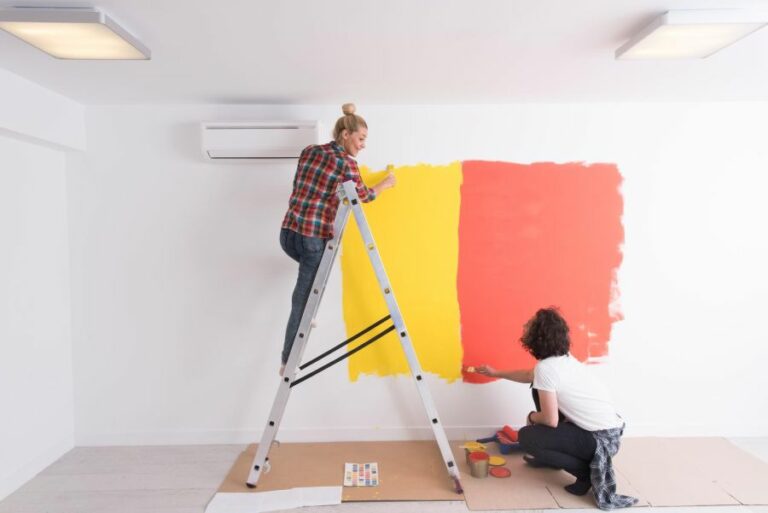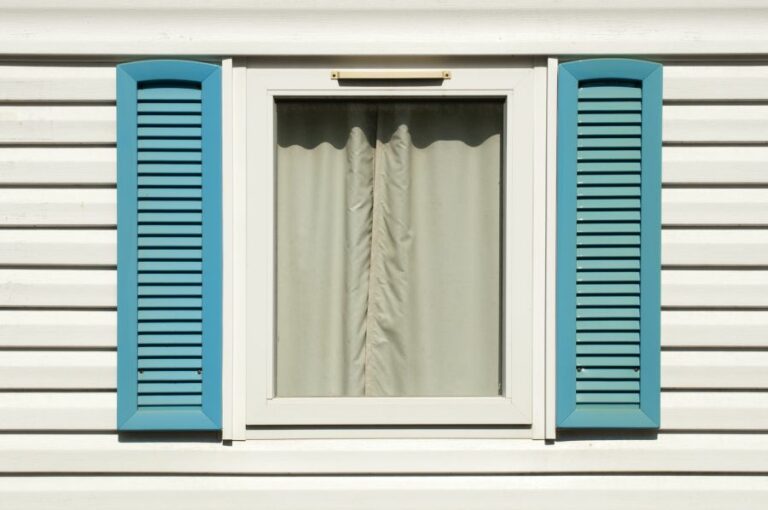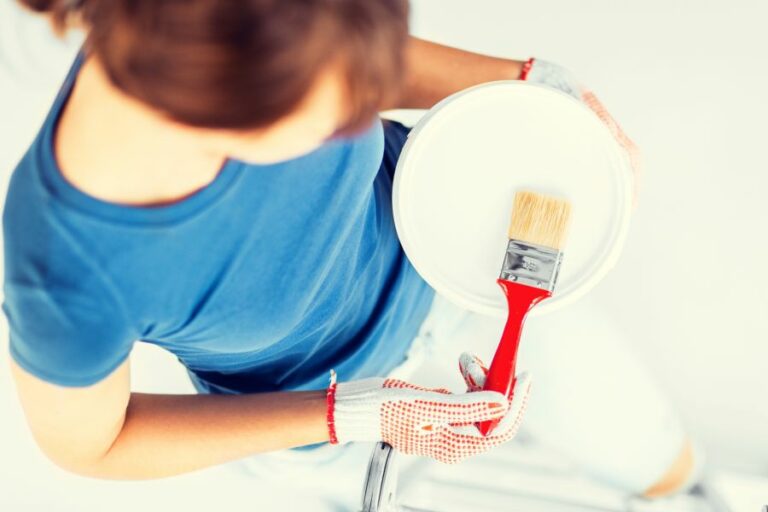How to Choose the Right Paint for Your Outdoor Furniture
Imagine transforming your dull outdoor furniture into a vibrant, enticing space where friends and family love to gather. Our blog post, ‘Outdoor Furniture Paint,’ unveils the perfect paint options, techniques, and tips to help you breathe new life into your worn-out patio or deck. The robust, weather-resistant solutions we introduce in this post ensure long-lasting protection and aid in superior aesthetics, enhancing your outdoor environment.
Get ready to revamp and rediscover the joy of owning fabulous outdoor furniture with ultimate ease and flair. Dive in and let the transformation begin!
Outdoor furniture paint:
Selecting the right paint and finish for outdoor furniture is crucial for durability and aesthetics. Some common paint types include acrylic, latex, oil-based, and spray paint, each with specific properties and use cases. Consider finishes like gloss, semi-gloss, satin, or matte based on durability and appearance preferences.
Preparing the furniture by cleaning, sanding, and priming ensures proper paint adhesion. To maintain painted furniture, regularly clean without harsh chemicals, shelter from extreme weather, and promptly touch up any scratches or dings.

Discover the secrets to revitalizing your outdoor furniture with paint! Learn about the various paint options, expert tips, and step-by-step guidance to give your patio a fresh, stylish makeover. Transform your backyard oasis today!
Contents
- 1 Exterior Furniture Coating and Paint
- 2 What Type of Paint Should Be Utilized for Outdoor Furniture?
- 3 Determining the Most Suitable Type of Paint for Exterior Wooden Furniture
- 4 Is it Necessary to Prime Outdoor Wooden Furniture Before Painting?
- 5 What is the Most Effective Method for Weatherproofing Outdoor Furniture?
Exterior Furniture Coating and Paint
• Selecting the Right Paint for Your Furniture
– Types of Paint
Regarding outdoor furniture paint, several types are available in the market, each with its properties and best use cases. Some of the most common types include:
- Acrylic paint: Acrylic paints are water-based and can be easily applied to various surfaces, including wood and metal. They are quick-drying and non-toxic, making them popular for outdoor furniture paint.
- Latex paint: Similar to acrylic paint, latex paint is also water-based and easy to clean up. Latex paint is known for its durability and resistance to peeling, making it an excellent choice for outdoor furniture.
- Oil-based paint: Oil-based paints are more durable than acrylic or latex paints, but they require more time to dry and can be harder to clean up. They are suitable for outdoor furniture made from materials prone to moisture-related issues, like metal or wood.
- Spray paint: If you’re looking for a faster, easier way to paint your outdoor furniture, spray paint may be the right choice. Spray paint comes in various colors and finishes, allowing you to cover small details and hard-to-reach areas effortlessly.
– Paint Finish
Another vital aspect to consider when choosing outdoor furniture paint is the finish that best suits your needs. Here are a few options to choose from:
- Gloss finish: A gloss finish provides a shiny, reflective surface that is easy to clean and maintain. It’s ideal for furniture exposed to dirt and grime, like picnic tables or benches.
- Semi-gloss finish: A semi-gloss finish is slightly less shiny than a full gloss finish but still provides a sheen that makes it easy to clean.
- Satin finish: A satin finish perfectly balances between gloss and matte finishes. It is less reflective than gloss finishes but still offers some sheen that makes it easy to clean.
- Matte finish: A matte finish is non-reflective and provides a more rustic, organic look to your outdoor furniture. This finish may require more maintenance, as dirt and dust can show up more easily.
• Preparing Your Furniture for Painting
– Cleaning the Surface
Before applying paint to your outdoor furniture, it’s essential to clean the surface thoroughly. Dirt, dust, and grime can prevent the paint from adhering properly, leading to uneven coverage or peeling.
You can use a mild soap and water solution or a commercial cleaner for outdoor furniture to clean the surface. Be sure to rinse thoroughly to remove any soap residue.
– Sanding and Priming
Once your furniture’s surface is clean and dry, you’ll want to prepare it for painting by sanding and priming. Sanding helps to create a smooth, even surface that will allow the paint to adhere better. Use fine-grit sandpaper to lightly sand the entire surface, then wipe off any dust with a tack cloth.
Priming is essential, especially if you’re painting a dark color over a lighter one or using a light color over an untreated surface. Choose a primer that is compatible with your chosen paint type and follow the manufacturer’s application instructions. Allow the primer to dry completely before proceeding to paint.
• Painting Your Outdoor Furniture
– Brush Application
Begin by stirring your paint thoroughly to ensure even color distribution. Load your brush by dipping it halfway into the paint, then wiping off the excess on the edge of the can. Apply the paint to your furniture using long, even strokes, maintaining a wet edge as you work to avoid brush marks.
Allow each coat of paint to dry completely before applying additional coats as needed to achieve your desired coverage.
– Spray Application
When spray paint, shake the can well before starting and follow the manufacturer’s instructions for application distance and coverage. Apply the paint using smooth, sweeping motions, overlapping each pass slightly to ensure even coverage.
As with brush application, allow each coat of spray paint to dry completely before adding additional coats.
• Caring for Your Painted Outdoor Furniture
After you’ve put in the time and effort to paint your outdoor furniture, you’ll want to ensure it looks great for as long as possible. Some tips for maintaining your painted furniture include:
- Clean your painted furniture regularly, using a mild soap and water solution or a cleaner specifically designed for outdoor furniture. Avoid harsh chemicals or abrasive materials, as these may damage the paint.
- Protect your painted furniture from extreme weather conditions by using furniture covers, moving it into a sheltered area, or storing it during winter.
- Touch up any scratches, chips, or dings as they occur to keep your paint job looking fresh and prevent more extensive damage.
In conclusion, selecting the right paint type and finish, properly preparing your furniture, and taking care of your painted furniture will ensure that your outdoor living space stays beautiful and inviting for years.
What Type of Paint Should Be Utilized for Outdoor Furniture?
Creating an inviting outdoor space requires proper attention to detail, including selecting the appropriate paint for outdoor furniture. With the variety of paint types available, choosing the right one for your needs can be overwhelming.
In this comprehensive guide, we will walk you through the different types of paint best suited for outdoor furniture and provide expert advice on the factors to consider while deciding.
• Paint Types for Outdoor Furniture
– 1. Latex Exterior Paint
Latex paint, also known as water-based paint, is popular for outdoor furniture due to its convenience and durability. It is easy to apply and dries quickly, making it an ideal option if you’re short on time.
Latex paint is also resistant to fading, cracking, and peeling, ensuring your furniture maintains its vibrant finish for longer periods.
Pros:
- Long-lasting and durable
- Dries quickly
- Easy to clean up with soap and water
- It comes in various finishes, including satin, semi-gloss, and gloss
– 2. Oil-Based Exterior Paint
Due to its adhesive qualities, oil-based paint is another suitable option for outdoor furniture, particularly metallic pieces. It provides a resilient finish that withstands the test of time, even in harsh weather conditions.
However, oil-based paint takes longer to dry and has a strong odor, so ensure proper ventilation during application.
Pros:
- Adhesive to various surfaces, including metal and wood
- It provides a rugged and durable finish
- Resistant to chipping and peeling
– 3. Acrylic Paint
Acrylic paint is a versatile and durable choice for outdoor furniture, formulated from acrylic resins. It adheres well to various surfaces such as wood, metal, and plastic while providing a long-lasting finish. Additionally, acrylic paint offers excellent UV resistance, essential in maintaining your furniture’s vibrancy, especially in direct sunlight.
Pros:
- Versatile, suitable for multiple surfaces
- UV resistant
- Water-resistant when dry
- Available in various finishes
– 4. Spray Paint
Spray paint is a convenient and efficient option for many DIY enthusiasts, providing a smooth and even finish on your outdoor furniture. It is available in numerous colors and varieties, including those specially designed for plastic and metal surfaces. Spray paint allows easy application, often requiring fewer coats than traditional paint types.
Pros:
- Easy and quick application
- It provides a smooth, even finish
- It comes in various formulations for different surfaces
- It may require fewer coats than other paint types
• Factors to Consider When Choosing Paint for Outdoor Furniture
– 1. Durability and Weather Resistance
The paint should withstand harsh weather conditions, including rain, snow, and direct sunlight. Look for paints with UV resistance and water-repelling properties, ensuring your furniture’s finish remains intact and vibrant even with extended outdoor exposure.
– 2. Surface Material
Choose a paint that adheres well to your furniture’s material, whether metal, wood, or plastic. Some paint types work better on specific surfaces. For example, oil-based paint is an excellent option for metal furniture, while acrylic paint is versatile enough for various materials.
– 3. Ease of Application
Consider the ease of application, especially if you’re a beginner at painting. Latex and spray paints are user-friendly options, allowing for quick and effortless application with minimal cleanup required.
– 4. Drying Time
Factor in the drying time if you’re working with a tight schedule or if the painted furniture needs to be used soon after painting. Latex and spray paints tend to dry faster than oil-based paints.
– 5. Finish
Determine the desired finish for your outdoor furniture, whether satin, semi-gloss, or gloss. Each paint type offers various finish options, allowing you to select the perfect look for your space.
• Expert Tips for Painting Outdoor Furniture
- Properly prep the surface by cleaning, sanding, or priming, ensuring better paint adhesion and a smoother finish.
- Apply thin coats of paint, allowing each coat to dry before applying the next one. This technique results in a more evenly distributed finish.
- Always follow the manufacturer’s instructions on the paint can, including recommended drying times and application methods.
- Invest in high-quality painting tools like brushes, rollers, and spray applicators. Quality tools will yield better results and prolong the lifespan of your painted furniture.
• Conclusion
Understanding the different paint types and their properties will help you make an informed decision while selecting paint for your outdoor furniture. Consider factors such as durability, weather resistance, surface material, application ease, and desired finish.
By choosing the right paint and following expert advice, you can create a comfortable and inviting outdoor space that will last for years.
Paint Type | Description | Benefits |
|---|---|---|
Latex Paint | Aerosol paint provides a smooth, even finish without brush marks. | Low odor, moisture resistant, and available in many colors and finishes. |
Acrylic Paint | Synthetic water-based paint that’s suitable for use on a variety of materials. | Easy to work with, durable, and resistant to fading from sunlight. |
Oil-Based Paint | Slow-drying paint that provides a hard, glossy finish. | Long-lasting, resistant to wear and weather, and good coverage with fewer coats. |
Spray Paint | It preserves wood grain, is water-resistant, and is available in various colors and transparencies. | Quick and easy application, good for hard-to-reach areas, and dries quickly. |
Exterior Wood Stain | A finish that enhances the natural beauty of wood and provides protection from the elements. | It preserves wood grain, is water-resistant, and available in various colors and transparencies. |
Determining the Most Suitable Type of Paint for Exterior Wooden Furniture
Outdoor wooden furniture is an excellent addition to any patio, deck, or outdoor living space. However, exposure to the elements, such as rain, sun, wind, and extreme temperatures, can cause the furniture to deteriorate over time.
Choosing the right type of paint is essential to protect and prolong the life of your outdoor wood furniture. This comprehensive guide will explore various paint options for outdoor wood furniture, discuss their advantages and disadvantages, and ultimately help you choose the best paint to keep your furniture looking new.
• The Importance of Primer for Outdoor Wood Furniture
Before diving into specific paint types, it is important to note that applying a primer is crucial in painting outdoor wood furniture. A quality primer prepares the wood’s surface, sealing it and ensuring better paint adhesion.
It can also prevent peeling, bubbling, or flaking over time. Look for a primer specifically designed for exterior wood surfaces, and ensure the primer is compatible with the chosen type of paint.
• Exterior Latex Paint: A Popular and Versatile Option
One of the most popular paint choices for outdoor wood furniture is exterior latex paint. This water-based paint is known for its versatility, durability, and ease of application.
– Advantages of Exterior Latex Paint
- It is available in various colors and finishes, allowing for endless customization.
- It is easy to apply and clean up with soap and water.
- It dries quickly and is resistant to UV rays, mildew, and moisture.
- It expands and contracts with the wood, reducing the risk of peeling or cracking over time.
– Disadvantages of Exterior Latex Paint
- It may not be as long-lasting as other paint types and require more frequent touch-ups or repainting.
- It does not provide the same protection against scratches and abrasions as other paint types.
Overall, exterior latex paint is a good choice for those looking for an easy-to-use and versatile option with a wide range of colors and finishes.
• Oil-Based Paint: Long-Lasting and Resistant
Oil-based paints are another popular option for outdoor wood furniture, known for their durability and resistance to damage.
– Advantages of Oil-Based Paint
- It offers better adhesion and longer-lasting protection compared to latex paint.
- It is more resistant to scratching, chipping, and abrasions.
- It provides a smoother finish with fewer visible brush strokes.
– Disadvantages of Oil-Based Paint
- It is more difficult to clean up and requires solvents or thinners.
- It has a strong odor, which may be unpleasant during application.
- It takes longer to dry compared to latex paint.
Despite its longer drying time and challenging cleanup process, oil-based paint can be an excellent choice for those seeking long-lasting protection and resistance to wear and tear.
• Exterior Wood Stain: Enhancing the Natural Beauty of Wood
For those who prefer to maintain the natural look of their wooden furniture, an exterior wood stain is a great alternative to paint. Wood stains penetrate the surface of the wood, enhancing its natural beauty and protecting it from the elements.
– Advantages of Exterior Wood Stain
- It accentuates the wood’s natural grain and texture.
- It offers protection against moisture, UV rays, and mildew.
- It is available in shades, from transparent to solid colors, allowing for customization while preserving the wood’s natural appearance.
– Disadvantages of Exterior Wood Stain
- It may not offer the same protection against scratches and abrasions as paint.
- It requires more frequent maintenance, including reapplication every few years.
If maintaining the natural look of your outdoor wood furniture is a priority, a quality exterior wood stain can provide both protection and an enhanced appearance.
• Specialty Paints: Designed for Extreme Conditions
Specialty paints, such as marine or epoxy paint, are specifically designed for environments with extreme conditions, like high humidity, direct sun exposure, and frequent temperature changes. While these paints may not be necessary for all outdoor wood furniture, they may be worth considering in certain situations.
– Advantages of Specialty Paints
- They offer superior protection against harsh environmental factors.
- They are designed to withstand extreme conditions, making them more durable and long-lasting.
– Disadvantages of Specialty Paints
- They can be more expensive than other paint types.
- They may require a more complex application process.
For outdoor wood furniture exposed to extreme conditions or located near bodies of water, specialty paint may provide the extra protection needed to keep it looking its best.
• Conclusion
As preferences and environmental factors will vary, there is no one-size-fits-all solution to choosing the best paint for outdoor wood furniture. However, by considering the advantages and disadvantages of different paint types, you can find the right one to protect your outdoor wood furniture and make it look beautiful.
Whether you choose the versatile and easy-to-use exterior latex paint, the durable and long-lasting oil-based paint, the natural-looking exterior wood stain, or the extreme condition-resistant specialty paint, proper surface preparation and routine maintenance will ensure that your furniture remains functional and attractive for years to come.
Paint Type | Advantages | Disadvantages |
|---|---|---|
Acrylic Latex Paint | Water-based, easy to clean, dries quickly, UV-resistant, durable, mildew-resistant | It takes longer to dry, requires solvents for cleanup, and may become brittle over time |
Oil-Based Paint | Smooth, strong finish, adheres well to surfaces, long-lasting | It may need to be reapplied more frequently, and may provide less coverage than paint |
Exterior Wood Stain & Sealant | Enhances natural wood appearance, protects against moisture and UV rays, lasts longer than paint | It may need to be reapplied more frequently and may provide less coverage than paint |
Is it Necessary to Prime Outdoor Wooden Furniture Before Painting?
Priming outdoor wood furniture before painting is an essential step in refinishing. Although it might seem like an extra effort, it plays a crucial role in the overall appearance and longevity of the paint job. This article will discuss the importance of priming wood furniture, how to choose the right primer and the step-by-step process of applying primer.
• Why Prime Outdoor Wood Furniture?
You should prime outdoor wood furniture before applying paint for several reasons. Some of the benefits of priming include the following:
– Enhanced Adhesion
Applying a primer creates a bonding layer between the wood and the paint. This bonding layer improves adhesion, preventing the paint from peeling or chipping away over time. Proper priming will ensure that your paint job lasts longer and looks better.
– Uniform Appearance
Uneven absorption of paint can lead to blotchy and uneven results. A good primer seals the wood surface and provides a uniform base for the paint to adhere to, thus resulting in a smooth and even finish.
– Improved Color
Primer can also improve the vibrancy of paint by preventing the wood from absorbing too much of the pigment. This enhances the color of the paint and provides better coverage, which means you may require fewer coats of paint to achieve the desired result.
– Protection Against Moisture and Rot
Priming will create a barrier between the wood and the elements, protecting your outdoor furniture from moisture, rot, and mildew. This is particularly important for furniture exposed to harsh weather conditions.
• Choosing the Right Primer
When choosing a primer for outdoor wood furniture, it is essential to select one that is suitable for exterior use and compatible with the type of paint you plan to use. Some factors to consider when choosing a primer for your project include the following:
– Oil-based vs. Water-based Primer
There are two main types of primers: oil-based and water-based. Oil-based primers generally provide better adhesion and stain-blocking properties, making them popular for exterior wood furniture. However, they often have strong odors and longer drying times. Water-based primers are easier to clean up, have lower odor levels, and dry faster, but they may provide a different level of adhesion than an oil-based primer. Consider your specific needs and preferences when choosing between these two options.
– Stain-blocking Primer
Choosing a primer that effectively covers these imperfections is essential for outdoor wood furniture with visible stains or discoloration. Stain-blocking primers are specially formulated to prevent stains from bleeding through the paint.
– Compatibility with Paint
Before purchasing a primer, ensure it is compatible with the type of paint you plan to use. Most primers will indicate on the packaging which types of paint work best with them. Generally, oil-based primers work well with both oil-based and latex paints, while water-based primers are more compatible with latex paints.
• How to Prime Outdoor Wood Furniture
Here’s a step-by-step guide on how to prepare and prime outdoor wood furniture for painting:
– Step 1: Clean the Furniture
Begin by cleaning the furniture thoroughly to remove any dirt or debris that may affect the adhesion of the primer. Use a mild detergent and water to clean the surface, then let it dry completely.
– Step 2: Sand the Surface
Sanding is an important step in preparing the furniture for priming. Using medium-grit sandpaper (100-120 grit), sand the entire piece’s surface to remove any old paint or varnish and create a smooth, even surface. Wipe away any dust with a clean, damp cloth.
– Step 3: Apply Primer
Once the surface is clean and sanded, it is essential to apply a primer. Choose a high-quality primer suitable for outdoor use. Stir the primer well before applying it to ensure even coverage.
Using a brush or paint roller, apply a thin, even coat of primer to the entire furniture surface. Use long, even strokes and work toward the wood grain for best results.
– Step 4: Allow Primer to Dry
Once you’ve applied an even coat of primer, leave the furniture to dry according to the manufacturer’s instructions. Ensure the piece is well-ventilated and free from dust, dirt, and insects that may mar the surface while it dries.
– Step 5: Lightly Sand the Primer
Once the primer is completely dry, lightly sand the surface with fine-grit sandpaper (220-grit or higher) to ensure a smooth base for paint. Remove any dust with a clean, damp cloth.
Now that your outdoor wood furniture is primed, it is ready to be painted. Follow the manufacturer’s guidelines for the appropriate paint and apply the desired number of coats for a beautiful, long-lasting finish.
What is the Most Effective Method for Weatherproofing Outdoor Furniture?
Outdoor furniture can be an excellent addition to your patio or garden, providing the perfect place to relax, entertain, and enjoy the great outdoors. However, outdoor furniture is constantly exposed to the elements, such as rain, sunlight, and wind, which can affect its durability and appearance.
This makes it essential to weatherproof your outdoor furniture, ensuring it remains in good condition and retains its aesthetic appeal for years.
This comprehensive guide will outline some of the most effective ways to weatherproof outdoor furniture, providing practical advice based on experience and expertise.
• Choosing the Right Materials
When it comes to weatherproofing your outdoor furniture, the material you choose plays a significant role in determining the level of protection you can achieve. Some options offer better resistance to the elements than others.
– Metal Furniture
Aluminum and wrought iron are popular choices for outdoor furniture, as they are both resistant to rust and require minimal maintenance.
Applying a protective coat of auto wax every year for aluminum furniture can help maintain its luster and add an extra layer of defense against the elements. Waterproof covers can also protect the furniture when it’s not in use.
Wrought iron furniture is more susceptible to corrosion, so it is important to keep it well-painted and rust-free. Touch up any scratches or areas where the paint has chipped away with rust-resistant paint. Apply a layer of paste wax on the paint for added protection.
– Wooden Furniture
Wooden outdoor furniture adds warmth and character to any outdoor setting but requires more maintenance than metal options. However, with the proper care and attention, wooden furniture can withstand the elements and remain in good condition for many years.
First, choose a robust, weather-resistant wood for your outdoor furniture, such as teak, cedar, or eucalyptus. Thoroughly clean the furniture with soap and water before applying a weatherproof stain or sealant designed specifically for outdoor use. This should be re-applied annually to retain maximum protection.
– Plastic Furniture
While plastic furniture may not offer the same elegance as metal or wooden options, it is often low-cost and requires minimal maintenance. Invest in a high-quality tarp or cover to protect your plastic outdoor furniture, and consider a UV-resistant spray, which can prolong the furniture’s lifespan and prevent discoloration.
• Proper Maintenance
No matter the material, consistent maintenance is essential for keeping your outdoor furniture in top shape.
– Regular Cleaning
Regularly clean your furniture to prevent dirt, dust, and other debris from settling on the surface. Use a mild soap and water solution, a soft brush, or a cloth to avoid damaging the finish. Use a pressure washer on a low setting for stubborn stains or hard-to-reach areas.
– Annual Inspections
Conduct a thorough inspection of your outdoor furniture every year. Check for any signs of damage, such as rust on metal furniture, cracked or loose boards on wooden pieces, or discoloration on plastic items. Address any issues promptly to avoid further deterioration.
– Manage Mold and Mildew
Outdoor furniture can be prone to mold and mildew, especially in damp or humid climates. To prevent this, ensure proper air circulation and sunlight exposure, and remove pooled water.
If you notice mold or mildew on your furniture, mix a solution of one part bleach to four parts water and thoroughly clean the affected area with a soft brush. Rinse thoroughly with water and allow the furniture to dry completely before using it again.
• Using Covers and Storage
Investing in weather-resistant covers and proper storage solutions can extend the lifespan of your outdoor furniture.
– Protective Covers
High-quality, waterproof covers protect your furniture from the elements and keep it looking its best. Choose covers made from breathable materials to prevent condensation and mildew build-up. Always secure your covers tightly around your furniture to prevent wind damage.
– Proper Storage
During extreme weather or the offseason, storing outdoor furniture in a dry, ventilated space, such as a garage or shed, is best. This will help prevent any irreversible damage caused by heavy rain, snow, or prolonged exposure to direct sunlight.
• Conclusion
Weatherproofing outdoor furniture is essential for maintaining its appearance and durability. By choosing the right materials, conducting regular maintenance, and using proper covers and storage solutions, you can significantly extend the lifespan of your furniture and enjoy your outdoor space for years to come.
You can ensure your outdoor furniture remains a beautiful and functional addition with effort and care.
Step | Description |
|---|---|
1. Choose Appropriate Materials | Select weather-resistant materials like teak, eucalyptus, wrought iron, or resin for outdoor furniture. |
2. Apply Protective Sealants | For wooden furniture, apply a water-repellent sealant to protect against moisture and UV damage. For metal furniture, use rust-resistant primer and paint. |
3. Use Outdoor Covers | Protect your outdoor furniture with weather-resistant covers when not in use, especially during extreme weather conditions. |
4. Store Cushions Indoors | When not in use, store cushions and other soft furnishings indoors to protect them from moisture, mold, and mildew. |
5. Regular Maintenance | Clean and inspect your outdoor furniture regularly to ensure it stays in good condition. |







